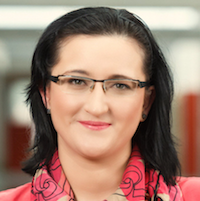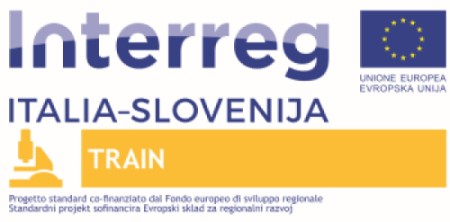Marinka Žitnik
Department of Computer Science, Stanford University, USA

Biography: Marinka Zitnik is a postdoc in Computer Science at Stanford University. Her research investigates machine learning for biomedical sciences, focusing on new methods for large networks of interactions between biomedical entities. She received her Ph.D. in Computer Science from University of Ljubljana while also researching at Imperial College London, University of Toronto, Baylor College of Medicine, and Stanford University. Her work received several best paper, poster, and research awards from the International Society for Computational Biology. She was named a Rising Star in EECS by MIT and also a Next Generation in Biomedicine by The Broad Institute of Harvard and MIT, being the only young scientist who received such recognition in both EECS and Biomedicine. She is also a member of the Chan Zuckerberg Biohub at Stanford.
Graph neural networks for computational drug repurposing
It can take 15 years and cost $1 billion for a new drug to reach patients as the question of identifying which diseases a new drug could treat is tremendously complex. Diseases are not independent of each other, and a large number of genes are shared between often quite distinct diseases. Similarly, the effects of drugs are not limited to proteins to which they directly bind in the body; instead, these effects spread throughout biological networks in which they act. Therefore, the effect of a drug on a disease is inherently a network phenomenon.
In this talk, I will describe a framework for large-scale prediction of medical indications from biological network data. The framework is based on a new insight that the structure of a small network neighborhood of a drug target is similar to the structure of the neighborhood of the disease the drug treats. The approach first learns deep embeddings, compact representations of subnetworks of proteins targeted by drugs and diseases. Importantly, the geometry of the learned embedding space is optimized such that performing algebraic operations in that space reflects interactions, the essence of biological networks. The embeddings are then used to predict what diseases a new drug could treat and to provide explanations for predictions. These explanations give insights into network mechanisms of drugs' therapeutic effects. Finally, such network embedding approaches make correct predictions for a large number of recently repurposed drugs, and can operate even on the hardest, yet extremely important, cases when a drug has no indicated disease or when a disease does not yet have any drug treatment.
Network embeddings for modeling polypharmacy and drug-drug interactions
Polypharmacy, the use of drug combinations, is common to treat patients with complex or co-existing diseases. However, a major consequence of polypharmacy is a high risk of adverse side effects, which emerge because of drug-drug interactions, in which activity of one drug changes if taken with another drug. Furthermore, polypharmacy is recognized as an increasingly serious problem in the health care system affecting nearly 15% of the U.S. population and costing more than $177 billion a year in the U.S. alone in treating side effects.
In this talk, I will describe the methodology for large-scale predictive modeling of polypharmacy. We start by capturing molecular, drug, and patient data for all drugs prescribed in the U.S. These data are represented with a massively multimodal network of protein-protein interactions, drug-protein target interactions, and polypharmacy side effects. I will then describe a network embedding approach that embeds nodes in such multimodal networks into optimized low-dimensional vector spaces. Here, I will outline key advancements in learning embeddings for networks, with an emphasis on fundamentally new opportunities in computational biology enabled by these advancements. Finally, I will show how we can use the approach to, for the first time, predict safety and side effects of drug combinations and how we can validate predictions in the clinic using real patient data.
